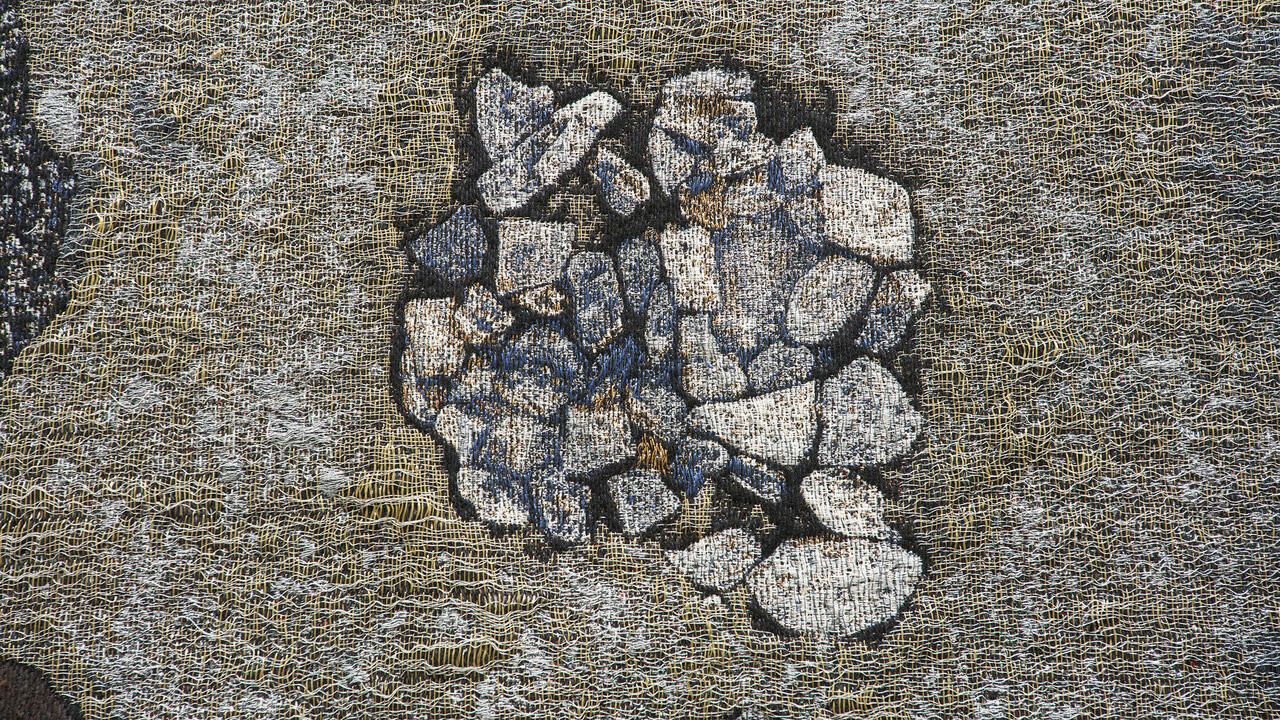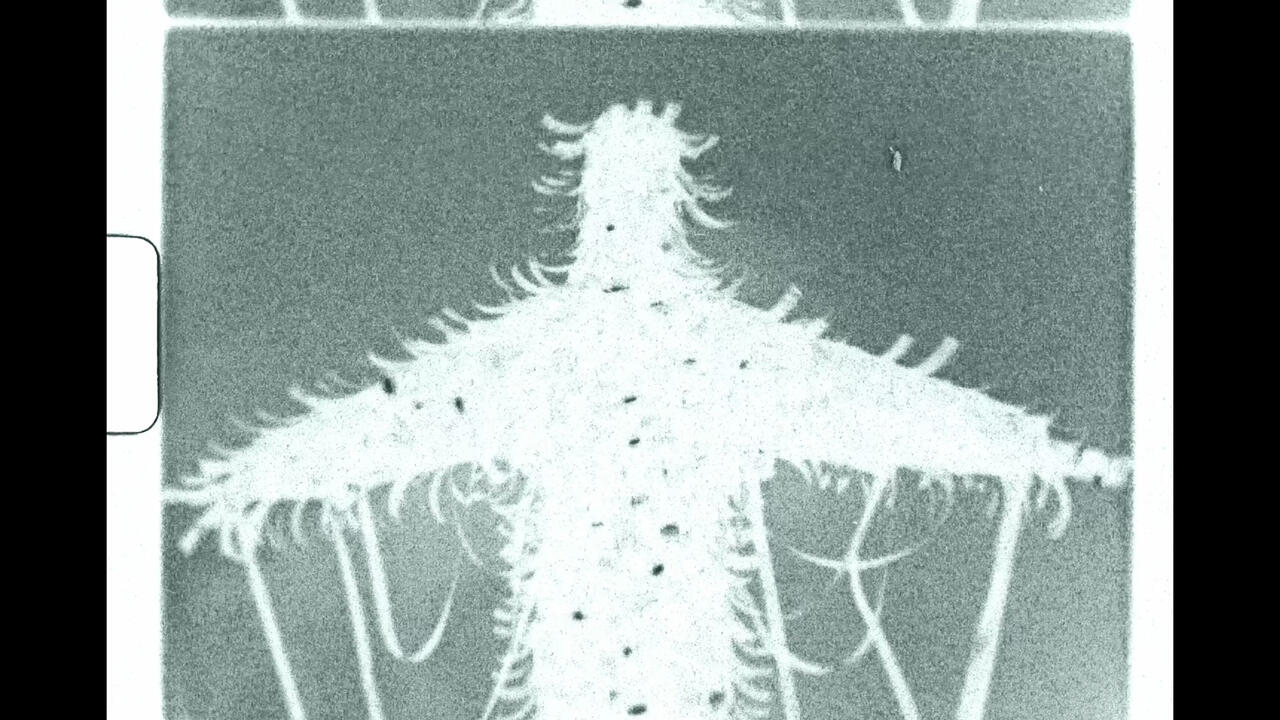The Productive Disorientation of the Yokohama Triennale
The eighth edition makes novel use of cacophony, disorientation and deferred gratification
The eighth edition makes novel use of cacophony, disorientation and deferred gratification

In the arena-like central atrium of the Yokohama Museum of Art, the main venue of the 8th Yokohama Triennale, artistic directors Carol Yinghua Lu and Liu Ding offer an unusual provocation with ‘The Directory of Life’. On a table, the Beijing-based curators have arranged an array of e-readers loaded with texts by contemporary thinkers – from Judith Butler and Kojin Karatani to Wang Hui and artist duo Erik Niedling and Ingo Niermann – inviting you to get lost in thought amidst the riot of art. Pippa Garner’s Human Prototype (2020), a chimeric figure made from fused male and female mannequins, abuts the table, while Sandra Mujinga’s ghostly mobiles of crimson fabric draped over gargantuan, skeletal armatures (And My Body Carried All of You, 2024) loom directly overhead. From one side of the atrium comes the sound of low, machine-gun-like vocalizations (Open Group’s video Repeat After Me, 2022), while from the opposite side emanates the irregular yet insistent clamour of bells (Atsuko Tanaka’s Work [Bell], 1955/81). Even if you try to block it out, the exhibition pulls you back into a shared encounter.

The dense and entangled orchestration speaks to the exhibition’s title, ‘Wild Grass: Our Lives’. Evoking the indomitable vitality of weeds, Lu and Liu layer different works to produce an unruly yet invigorating encounter that defies the carefully controlled visitor experience typical of exhibitions in Japan. As announced by the opening table of texts, the exhibition is paced according to the rhythms of reading, with moments of relative stasis triggering flashes of transformative insight.
The vocalizations in the atrium, for example, originate from interviews with refugees of Russia’s invasion of Ukraine, whom the artists asked to replicate the sounds of weaponry. Lu and Liu’s deployment of the work across the vast space poignantly reconfigures the proximity of the war; sounds from ‘over there’ worm their way into your consciousness before you have a chance to place them. Installed in one of the surrounding upper galleries, Tanaka’s aural work is activated by a button that sets off a network of bells, their dislocated ringing collapsing the distance between playful disruption and sounding the alarm on urgent yet difficult-to-fathom emergencies like pandemics or climate change.

The triennial is at its best where Lu and Liu spotlight socially and politically committed practices while remaining attentive to the aesthetics of exhibition-making. Commendably, they dedicate an entire gallery to the late painter and printmaker Taeko Tomiyama, whose practice was informed by a lifelong engagement with labour, postcolonial and feminist issues. Likewise, the use of the former Daiichi Bank Yokohama Branch building as a site for presenting collectives engaged in community organization and activism – such as the Inter-Asia Woodcut Mapping Group and Shiroto no Ran (Amateur Riot) – nods to the legacy of the Occupy movement while pointing to alternative modes of exchange and circulation to mass commercialism.

In large, reflective lettering, text runs in a circuit around the ceiling of two galleries at the Yokohama Museum of Art, one in Japanese and one in English: ‘You can’t swim without drowning. You can’t find an exit unless you hit a wall. It might feel safe to sit in the dark and think quietly, but that path will never lead you to the world of light; you cannot be thoroughly enlightened unless you are thoroughly mistaken.’ The text is by the early 20th-century Japanese writer Hakuson Kuriyagawa, whose work was translated into Chinese by the novelist Lu Xun while the latter was composing his own collection of socially critical prose poems, Wild Grass (1927). The exhibition’s provocative strategies of deferral and disorientation let viewers drown just a little bit so that they may learn to swim.
8th Yokohama Triennale's ‘Wild Grass: Our Lives', 2024 at The Yokohama Museum of Art, Yokohama, Japan until June 9
Main image: Your Bros Filmmaking Group (So Yo-Hen, Liao Hsiu-Hui, Tien Zong-Yuan), 宿舍 (Dorm) (detail), 2023–24, installation view. Courtesy: the artists and The Yokohama Museum of Art; photograph: Tomita Ryohei






















